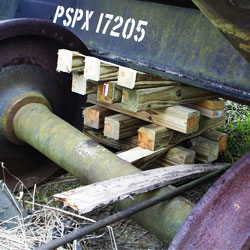 Take in all the action and discover what your team may be missing! With Roco Rescue Challenge 2015 right around the corner, we wanted to share some of the benefits of attending as an observer. Here’s what one of our observers had to say about last year’s event…
Take in all the action and discover what your team may be missing! With Roco Rescue Challenge 2015 right around the corner, we wanted to share some of the benefits of attending as an observer. Here’s what one of our observers had to say about last year’s event…
"You just can't get everything you need out of a classroom. Coming out and seeing the teams performing different techniques and scenarios allowed us to gain insight that will be used to kick-start our team."
Don't miss the rescue team event of the year!
Call us at 800-647-7626 and reserve your ticket today.
Rescue teams from across the country will participate in realistic confined space rescue exercises designed by Roco’s top instructors. And, although Challenge is more of a learning event than a competition, trophies will be awarded to the teams with top scores for individual skills proficiency and the infamous “Yellow Brick Road” rescue-relay scenario.
Roco Rescue Challenge meets the annual rescue practice requirements of 1910.146 while providing realistic practice drills in all six confined space types. Written documentation will be provided to each team following the event.


 "If you've been through a Roco class, whether it was Roco certification to NFPA 1006, or OSHA compliance training, our new Industrial Rescue III course can be the next step for you and your team. This course will challenge students (and rescue teams) to solve real-world confined space rescue scenarios building on previously learned skills, while introducing new techniques for more complex confined space incidents.
"If you've been through a Roco class, whether it was Roco certification to NFPA 1006, or OSHA compliance training, our new Industrial Rescue III course can be the next step for you and your team. This course will challenge students (and rescue teams) to solve real-world confined space rescue scenarios building on previously learned skills, while introducing new techniques for more complex confined space incidents.  OPPD (Omaha Public Power District) rescue team members were put to the test by the elements and Roco instructors during a recent rescue class at their facility. During the week-long class, they experienced high temperatures and rain - all while working at varying heights! However, it provided to be a great learning opportunity for the team.
OPPD (Omaha Public Power District) rescue team members were put to the test by the elements and Roco instructors during a recent rescue class at their facility. During the week-long class, they experienced high temperatures and rain - all while working at varying heights! However, it provided to be a great learning opportunity for the team. Washington, D.C. – In response to requests from the construction industry, OSHA is delaying full enforcement of its recently promulgated Confined Spaces in Construction Standard to allow employers additional time to comply with the rule.
Washington, D.C. – In response to requests from the construction industry, OSHA is delaying full enforcement of its recently promulgated Confined Spaces in Construction Standard to allow employers additional time to comply with the rule. 
 Firstly, if there is a potential for a TSAR incident to occur within your jurisdiction, NFPA 1670 requires the authority having jurisdiction (AHJ) to address a number of “General Requirements” found in Chapter 4. The review and completion of these requirements are usually a function of the Rescue Team Leader along with key management personnel who authorize, budget, schedule, and equip the Rescue Team.
Firstly, if there is a potential for a TSAR incident to occur within your jurisdiction, NFPA 1670 requires the authority having jurisdiction (AHJ) to address a number of “General Requirements” found in Chapter 4. The review and completion of these requirements are usually a function of the Rescue Team Leader along with key management personnel who authorize, budget, schedule, and equip the Rescue Team.
 This checklist is for day-to-day incident responses under predictable jurisdictional response conditions and should not be used for disaster scenarios where large scale regional and federal resources will be required to mitigate the incident.
This checklist is for day-to-day incident responses under predictable jurisdictional response conditions and should not be used for disaster scenarios where large scale regional and federal resources will be required to mitigate the incident. 


